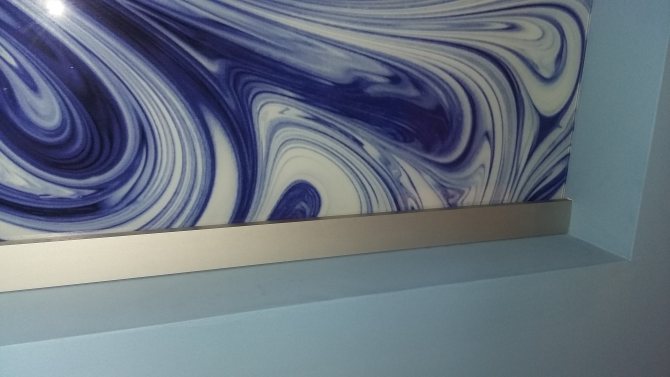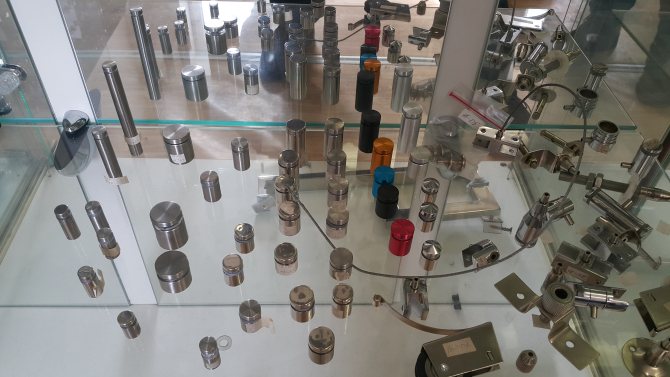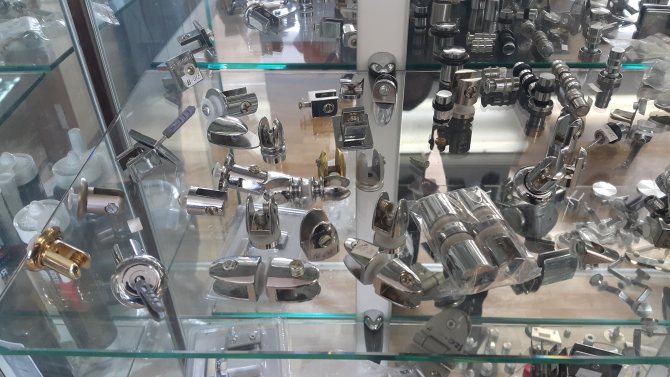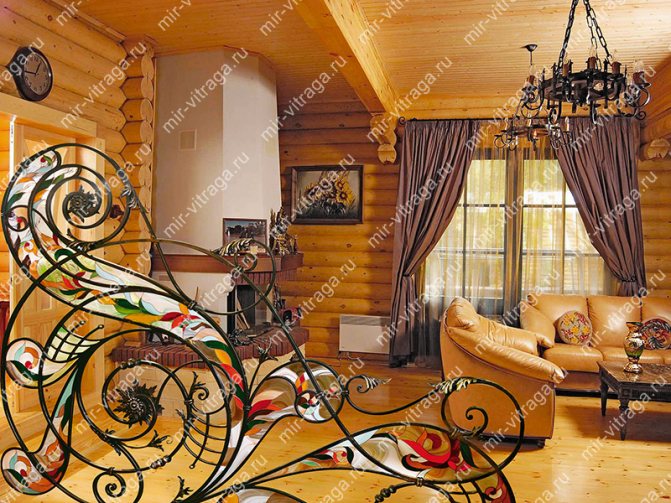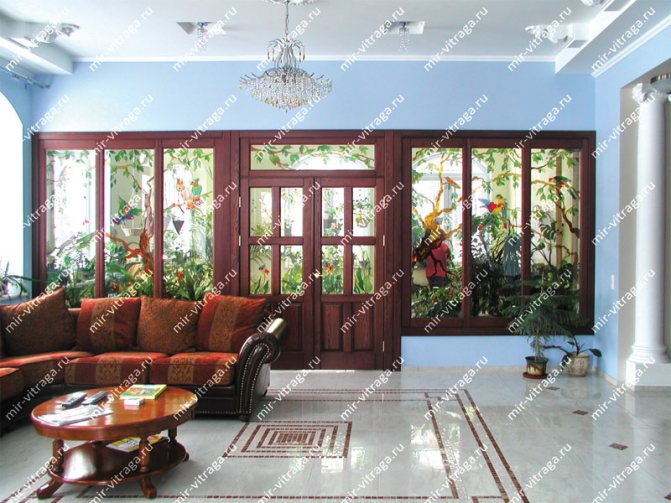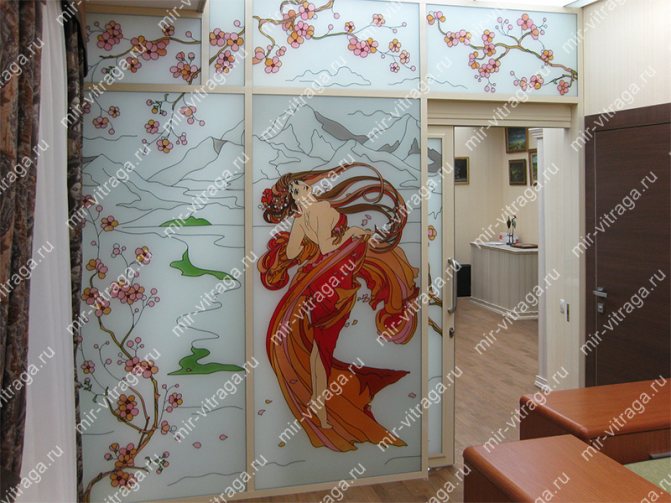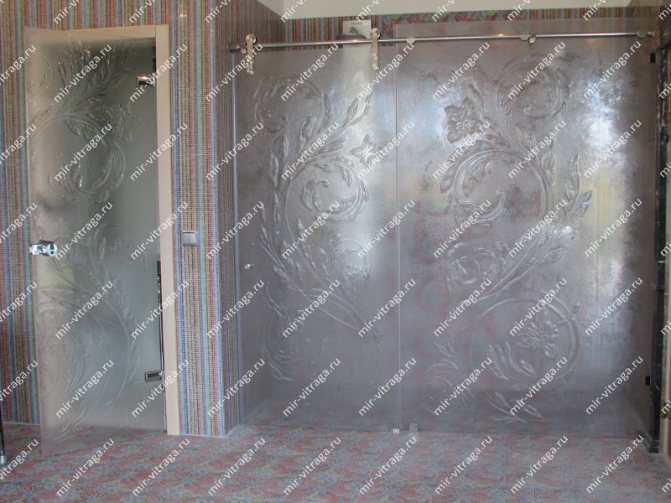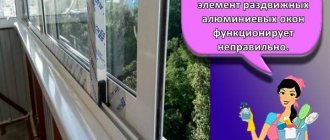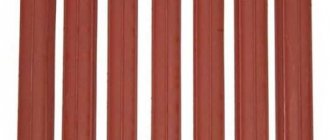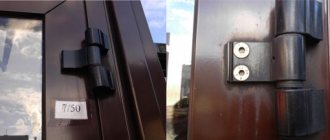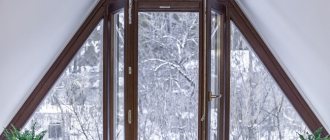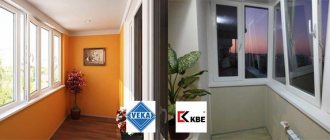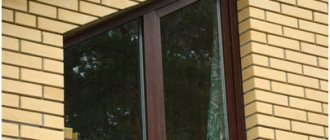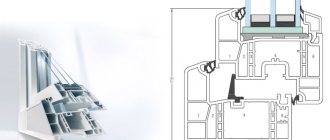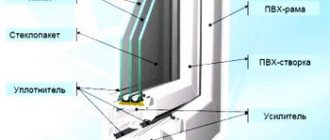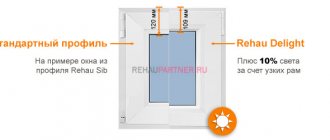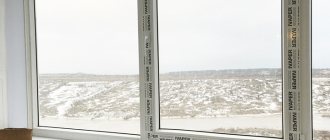Stained-glass windows are beautiful, but troublesome if you install them yourself. The optimal solution is to entrust the installation to professionals. Its services are offered by and. Installation of aluminum stained-glass windows with us is fast, high-quality and inexpensive.
Stained-glass windows made of aluminum have high technological characteristics, which allows them to be used for a long time. They are most often used for projects with varying degrees of complexity. Installation is the installation of the base, on which double-glazed windows or ordinary glass are then attached. In order not to disrupt the functionality, you should approach the installation process with full responsibility.
This is exactly what the Glass-Guide specialists do. A team of experienced craftsmen will quickly and efficiently perform work for which a corresponding guarantee is issued.
Advantages and disadvantages of translucent structures made of aluminum profile
They are made of alloys AD31T1, AD31T1 (25), AD31T1 (22), 6060T66 and 6060T6, technical parameters meet the provisions of GOST 22233-2001.
Chemical composition
In terms of many performance characteristics, the structures are unmatched among the previously used building materials.
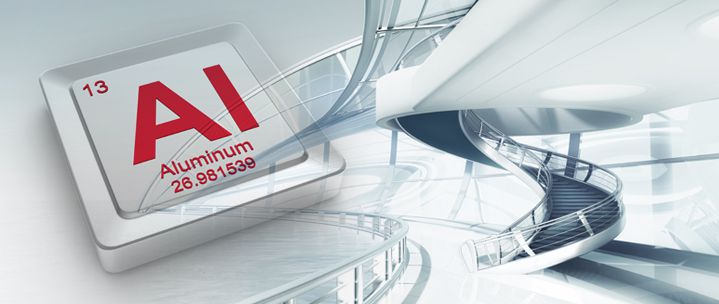
The aluminum frame is lightweight, strong and durable
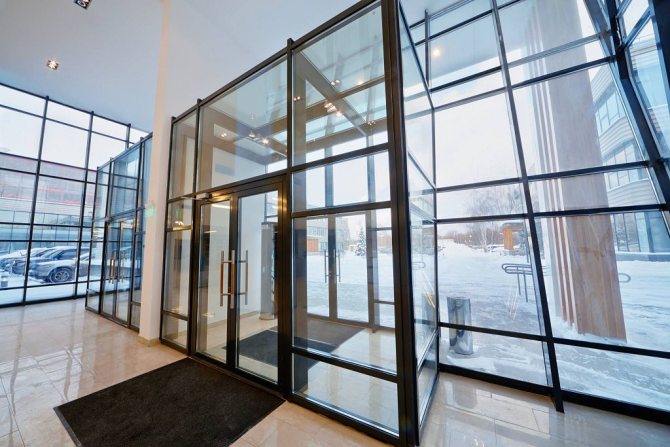
In the design and construction of buildings, architects and designers are increasingly guided by the principle of "more light"
Dignity
- Durability and light weight. In terms of resistance to mechanical stress to weight, aluminum alloys occupy one of the leading positions among all known alloys.
- Constructive variability. The production technology allows designers to create original elements of various geometries and linear dimensions.
- Durability. The service life of aluminum structures is unlimited. Only those elements that have significant mechanical damage are subject to replacement.
- Ease of maintenance. After the installation of structures, periodic maintenance is not performed.
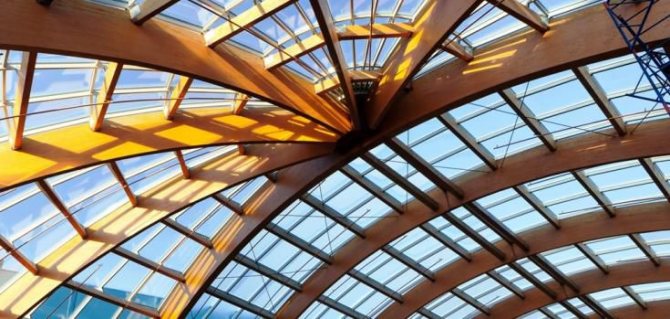

To fill the frame structure of stained-glass glazing, either glass or double-glazed windows is used
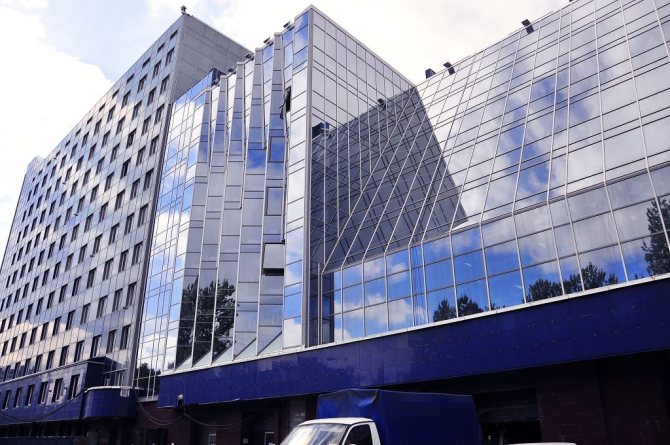

The use of special insulating profiles in the production of the frame can significantly improve the heat-saving properties.
But there is also one very significant drawback - the high cost. Quality and performance come at a price.
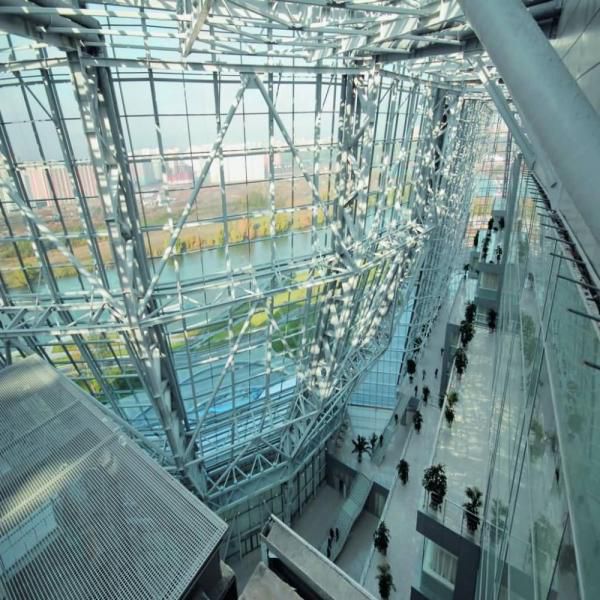

Translucent structures made of aluminum profiles are quite expensive
Niche and stained glass
When choosing a method of installing a stained-glass window in a niche, take into account the weight of the product, its dimensions, how strong and reliable the canvas itself is. The load on the stained-glass window during its operation is also taken into account. Stained glass can be fixed or sliding, opening.
Stained glass in a niche can be in the form of decorative glass inserts mounted either in a wooden or metal frame. It is possible to mount it in a profile, preferably metal. Stained glass is also made in the form of a sash. The sash, in this case, is a solid sheet made of glass elements.
The stained glass window, which slides and opens, is fixed with hinges, glazing beads or holders. And what kind of fasteners will have to be used depends on the installation method. The fixed stained-glass window is fixed with self-tapping screws. But not simple, but decorative. Such a stained-glass window is installed in a wooden as well as in a metal frame.
What elements do the translucent structures consist of?
Before considering the process of assembling structures, you need to study the special technical names of individual elements. There are quite a few of them, but you need to remember all of them.
- Profile... It is made by extrusion, it has different indicators in thickness, length and width. It is used as a main or additional load-bearing element.
- Solid profile... The simplest element, used only as a decoration, has no closed cavities. It can have various geometries and thicknesses, the front part is covered with powder paints.
- Complete profile. Differs in increased physical characteristics of the bearing capacity. In the section, it has closed cavities, due to which the thermal conductivity is significantly reduced. The quality of the profiles depends on the number of cavities.
- Combined profile. The most complex element of metal aluminum structures, individual parts are connected by thermal inserts that reduce heat losses.
- Impost. Vertical or horizontal sash support. It can be reinforced or ordinary.
- Sash. The opening part of the window, the thickness depends on the number of glasses in the glass unit.
- Profile camera... Closed space inside the profile, which serves as a heat insulator.
- Bracket... The supporting element, fixed to the wall, supports the entire weight of the aluminum structure.
- Rubber seals. They have a different look, height and length, they are inserted into the grooves of the profiles. Used to seal contact points.
- Thermal insert. Tubular elastic element, used to exclude the appearance of cold bridges. It is inserted into a footprint on a profile.
- Clamping bar... Decorative component, fixed to the front of the profiles with latches or self-tapping screws.
- Rusk. With its help, vertical and horizontal parts of structures are connected.
- Spacer... It is used to control the width of double-glazed windows.
- Support pad... A double-glazed window rests on it.
- Lashing heels. Metal plates with holes with which the structure is anchored to surfaces.
- Shtapik... Decorative plastic latch, used in windows and doors.
Some manufacturers complete their products with additional complementary parts, the name and purpose are indicated in the instructions.
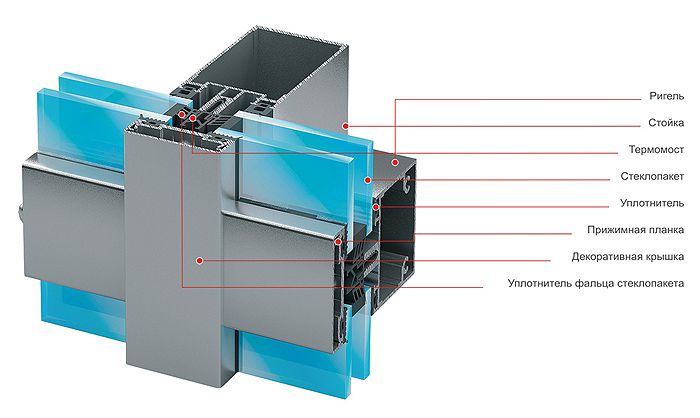

Post-transom facade, scheme
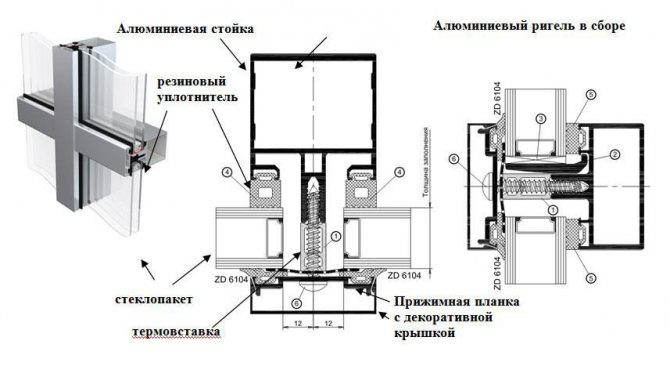

Features of aluminum glazing of facades
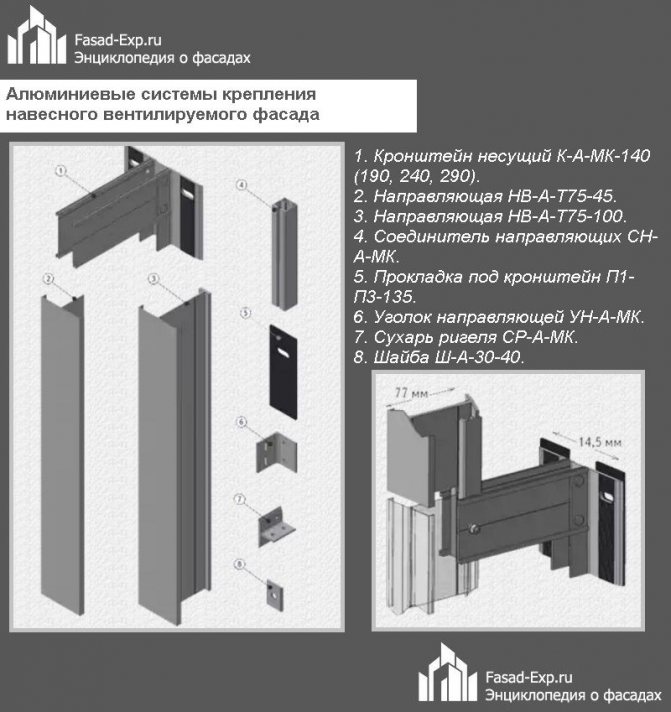

Aluminum systems of fastening of the hinged ventilated facade
We mount and test the stained-glass window
At this stage of work, we install the sash, install the seals, and mount the glass parts. If the design provides for additional elements, then we install them as well. After finishing the installation, we check how certain structural elements work. Be sure to make sure that every detail of the structure is appropriate for its place and purpose.
At the final stage of the work, the rooms or other premises where the work was carried out are cleaned. The more thoroughly you clean up, the better.
Technical requirements for aluminum structures
The values for physical strength, performance parameters and limit deviations of linear dimensions are prescribed by the Eurasian Council for Standardization, Metrology and Certification (EASC). For window units, various ways of opening the sash are allowed.
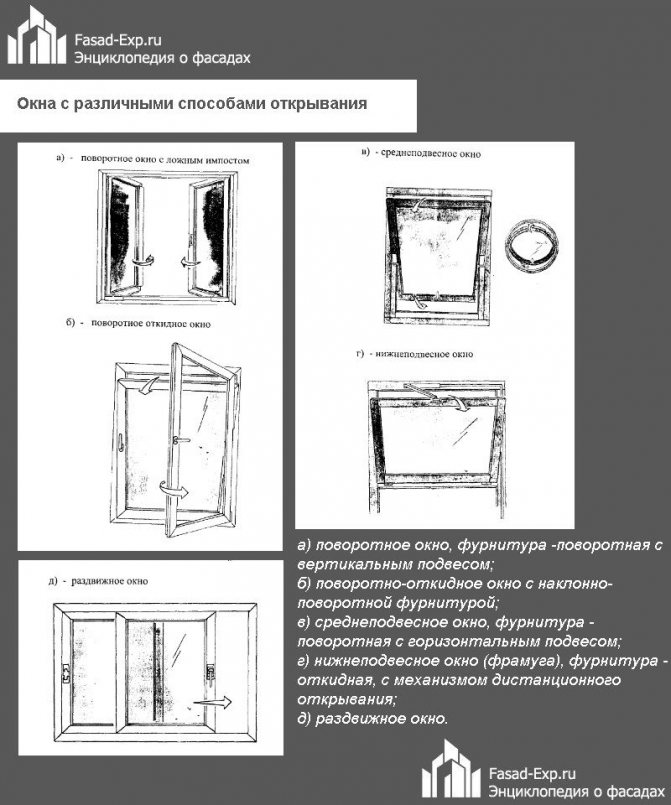

Windows with different opening methods
It is obligatory to use heat-saving profiles in heated rooms.
In order to increase the stability of the structure, the sash area is ≤ 2.5 m2, and the weight together with the glass unit is ≤ 100 kg. The maximum dimensions of the doors are 210 cm in height and 120 cm in width. Profile door leaves cannot be higher than 210 mm and wider than 90 cm.If the use of large structures is required, then for them it is necessary to perform separate calculations for each loaded node, including hinges and other additional elements. Resistance to permanent static loads of the leaf plane ≥ 1200 N, load-bearing capacity in the corners ≥ 400 N.
All structures must have special openings for drainage of rainwater, a system for draining the internal cavities of double-glazed windows. At the same time, the elements of natural ventilation and water drainage should not have a negative impact on heat saving indicators. The design should provide for emergency emergency opening from the outside in case of emergencies.
Aluminum alloys used for the manufacture of profiles, in terms of chemical composition and physical characteristics, must comply with the provisions of the current GOST 22233.
GOST 22233-2001. Extruded profiles from aluminum alloys for translucent enclosing structures. Technical conditions. Download file
GOST 22233-2001
GOST 31014-2002. Glass-filled polyamide profiles. Technical conditions. Download file
GOST 31014-2002
Thermal insulation inserts are made of polyamide in accordance with GOST 31014, to reduce thermal conductivity, the air chambers of the profiles can be filled with foamed polystyrene of various brands, these are the highest quality and most expensive products. The connection of thermal insulators and seals is reliable and guarantees tightness for at least ten years of operation.
The durability of the profiles for the most loaded unit must ensure more than 40 years of use, and all component parts must meet the same criterion. All elements in direct contact with aluminum have an anodic oxide coating. For static load, structures must hold at least 500 N, for a torque of ≥ 25 N / m.
Some features when assembling nodes
In two ways, aluminum stained-glass windows can be installed, while the unit can be located in the upper and lower parts. It is important that only the bottom element is movable. If the mounting method is two-post, the post will be anchored to the bottom assembly with the edge floating. This method of assembling the structure significantly speeds up the work. If spiders are used for fastenings, the gap must be clear, all nodes must be securely fixed. The upper assembly remains rigid when using this type of attachment.
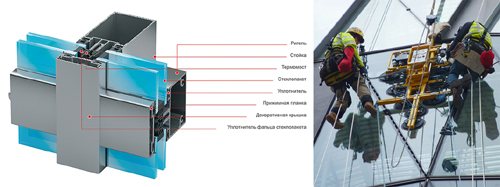

Aluminum does not compress well, but it has the ability to stretch, so it is most competent to hang structures from it. Do not fix the racks from below, this contributes to the sagging of the structures.
Stained glass can significantly improve the look of your space and make it more interesting. Installation is quite complicated and requires a professional and responsible approach. Having some knowledge about how the stained-glass window is assembled, you can hire a competent team to install it.
Assembly technology
Aluminum translucent profile structures are currently the most expensive elements. We strongly advise against designing, assembling and installing them yourself if you have no experience in calculating structural elements. Errors lead to the destruction of products, and this is not only a waste of time and money, but also the risk of injury.
The assembly of structures must be done in strict accordance with the design documentation, which indicates not only the dimensions, but also the technical characteristics of the elements. If you can independently calculate the loads in each of them, taking into account the peculiarities of the geometry, dimensions, installation location, wind and snow loads and other factors that exert efforts, then do the documentation without the help of professionals.
Important. Do not rush to cut the profiles according to these dimensions, check the accuracy of measurements several times.Remember that you will never be able to lengthen a part that is too short; you will have to throw it away. And this has a very negative effect on the final cost of products.
How to assemble a façade system?
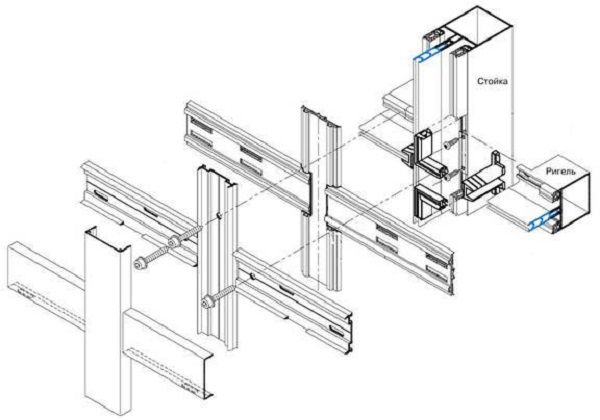

Assembly diagram
Step 1. Attach crackers to the facade profile according to the specified dimensions.
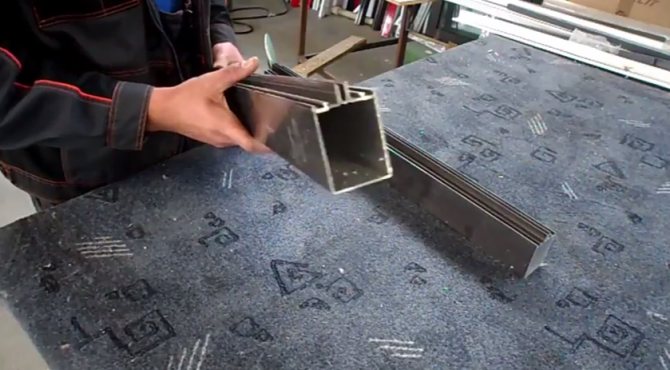

Facade profile
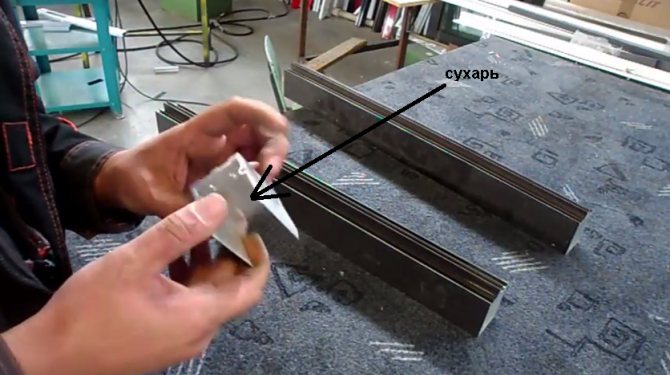

Rusks
Prepare the template in advance, according to it you need to fix all the elements on one side. For the template, saw off a piece of the profile up to one centimeter long with a grinder. Fastening is carried out with strong self-tapping screws for metal, the size of the screws must be calculated or indicated in the documentation for the assembly of the structure.
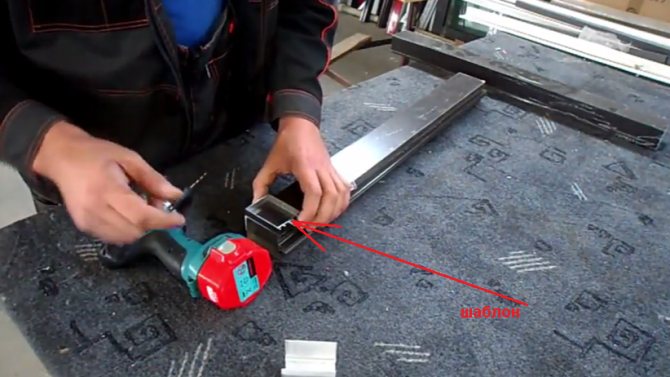

Template
Step 2. Remove the protective plastic film at the place where the crackers are attached. Install the template on the profile at a calculated distance from the end, insert a cracker into it.
Important. If, during the installation of the facade system, the finished floor is not yet ready, then lift the cracker to its mark (zero level). The bottom of the vertical rack will be filled with concrete, the finishing floor will rely on it, the biscuit should be on the same horizontal line with the finishing coating. The same must be foreseen with the ceiling. If it is not ready yet, then fix the biscuit below. How much depends on the specific design of the ceiling.
Insert the cracker into the template and drill four holes. Practitioners recommend using hemispherical self-tapping screws, they can withstand increased forces. Press washers are inferior to them in these indicators. Tighten the self-tapping screws without undue zeal, do not turn the thread. If such a nuisance happens, screw a screw of a slightly larger diameter into the same place. If the glass unit is double or triple, then it is safer to fasten the crackers with bolts and nuts. Make sure that the cracker is tightly pressed, check the reliability of fixation.
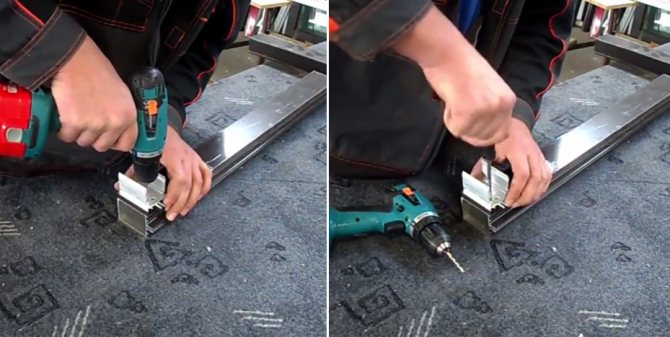

Fastening a biscuit
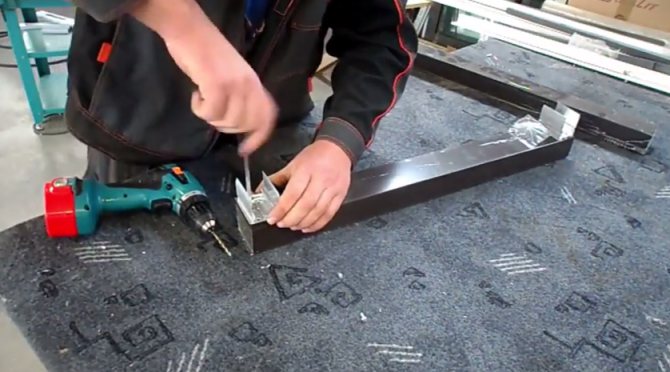

Fixing the second biscuit
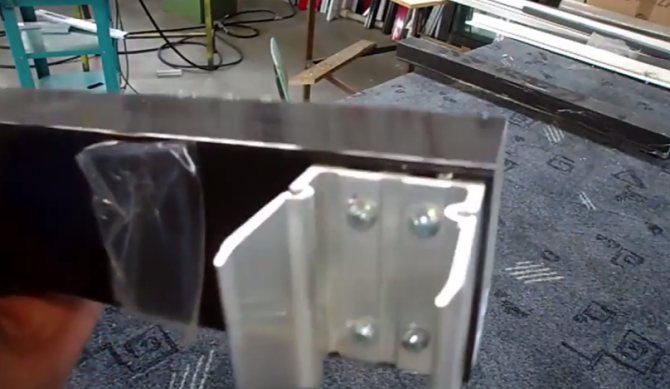

Pinned rusk
Step 3. After completing the attachment of crackers on opposite profiles, be sure to check their position. Place two elements opposite each other, the edges of the crackers should be in one line. This is extremely important, otherwise there will be no 90 ° in the corners, it will be impossible to insert double-glazed windows.
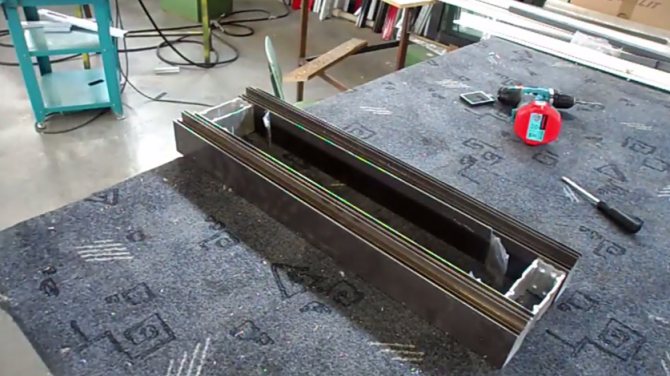

Crackers should be on the same level
Step 4. Attach the fixing heels to the special inserts, often the same crackers are used as inserts, only long ones.
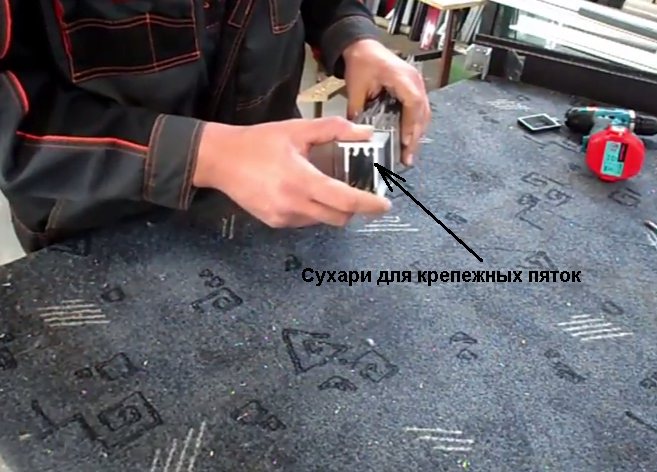

Crackers for lashing heels
Responsible manufacturers supply them in a set. If not, you will have to do it yourself, prepare the plates and cut the threads in the end cavities of the crackers. The length of the heel crusts is approximately 6–8 centimeters. Attach the metal plate (heel) with anchors to a long cracker, then it is inserted into the hollow honor of the profile.
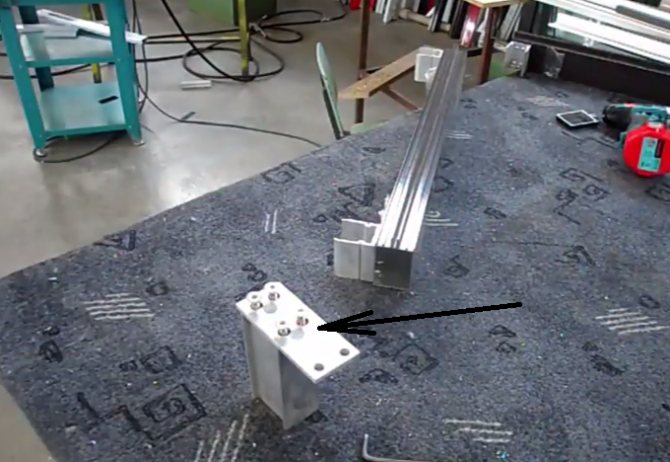

Screw on the plate
The plate is longer in size than the profile and has two additional holes with which the stand is attached to the floor and ceiling. Two embedded heels are attached at the top, and two at the bottom of the structure.
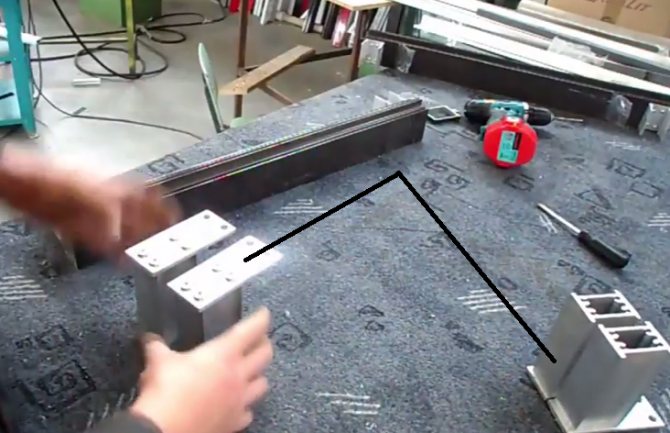

Embedded, 4 pieces
Step 5. Proceed with the installation of the crossbars. Crossbars are inserted into crackers, on the inner side surfaces of which there are special mounting slots for self-tapping screws. In order for them to hold, attach them with self-tapping screws. To ensure that the holes on the ledgers line up with the seats, take measurements with a caliper. Find out the height of the seats and drill Ø5 mm holes in the ledgers at the same distance.
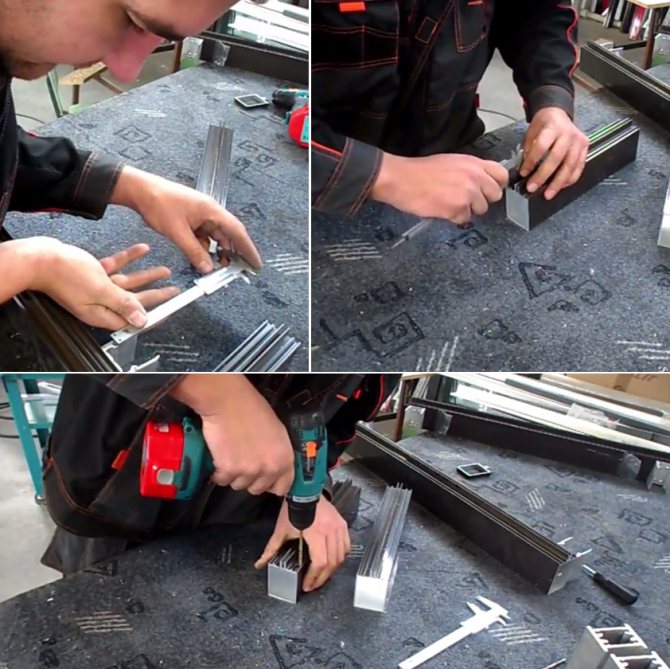

Marking and drilling holes
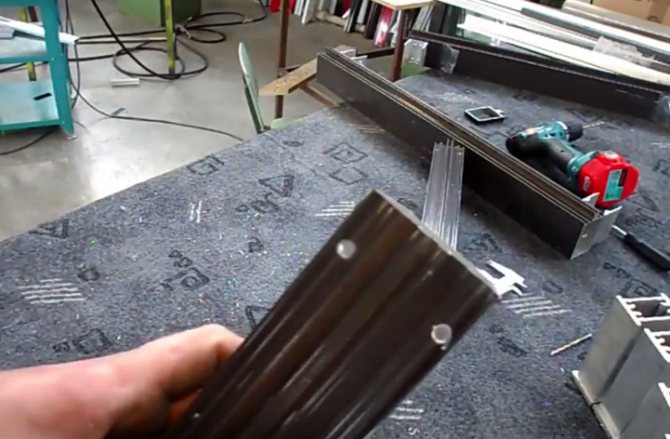

Holes
Practical advice. When drilling holes in aluminum profiles, make sure that the chips do not scratch the paint. Timely clean the drill from accumulated shavings. Aluminum alloys have an unpleasant property - they constantly clog the grooves of the drill, it does not work well and overheats.
Step 6. Insert insulating glass seals into the grooves of the profiles. They have different heights depending on the thickness of the glass units.
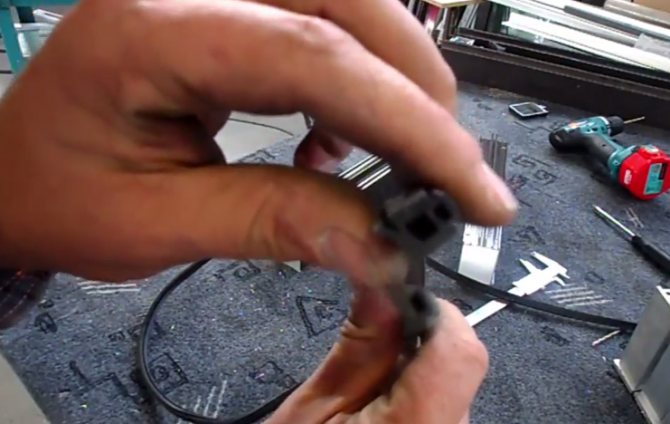

Seals can be of different thicknesses
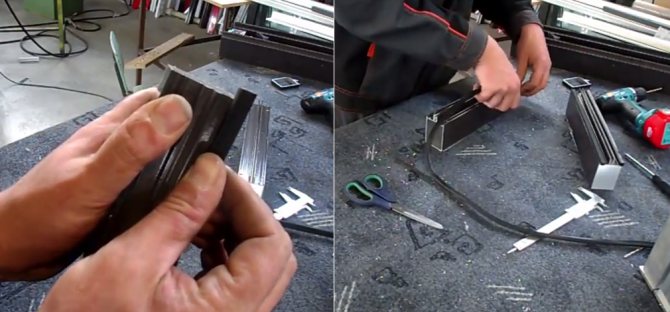

Installation of seals
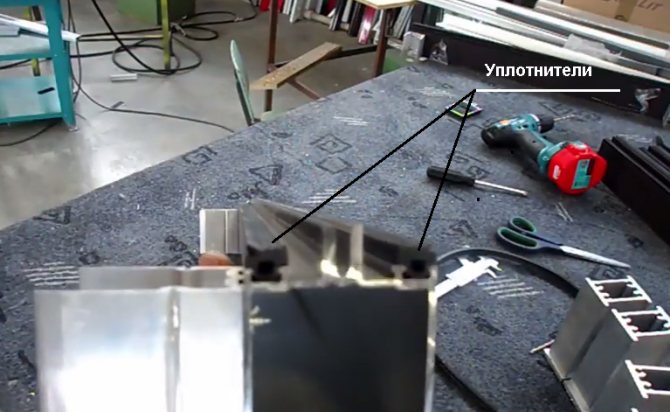

Seals
Rubber crossbars with a stock of approximately five millimeters of seals. This is necessary so that during thermal expansion, the seal constantly adheres tightly to the surfaces. Then, during final assembly, the protruding tip is compressed and forcibly sits into place in the groove.
Step 7. After preparing all the elements, assemble the structure into a single whole. Insert the crossbars in turn into the vertical posts, they should fit into the screwed crackers. Fix the elements with self-tapping screws into the drilled holes. We recommend using countersunk self-tapping screws. They hold securely, and in case of minor errors they will not interfere with inserting a double-glazed window.
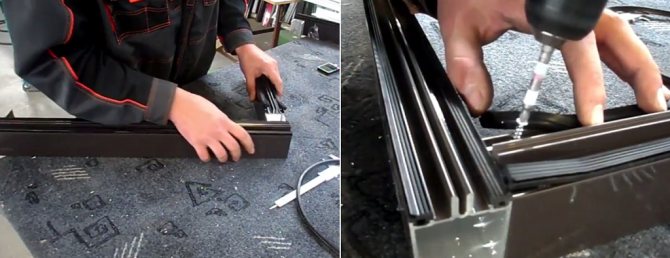

Connecting elements
Step 8. To prevent aluminum from outside touching the inside and not losing heat, install a thermal bridge (thermal insert). It is installed in special mounting grooves of the profiles, the grooves are located in the middle of the elements. Carefully place the thermal bridge, make sure that it lies in place along its entire length.
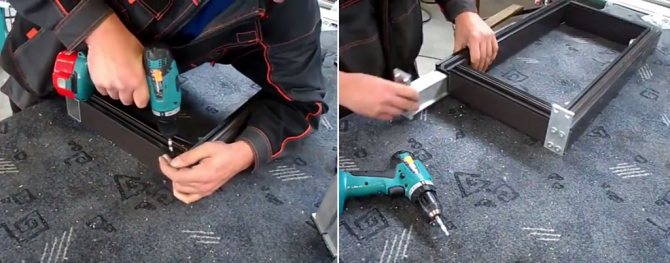

Assembling the structure
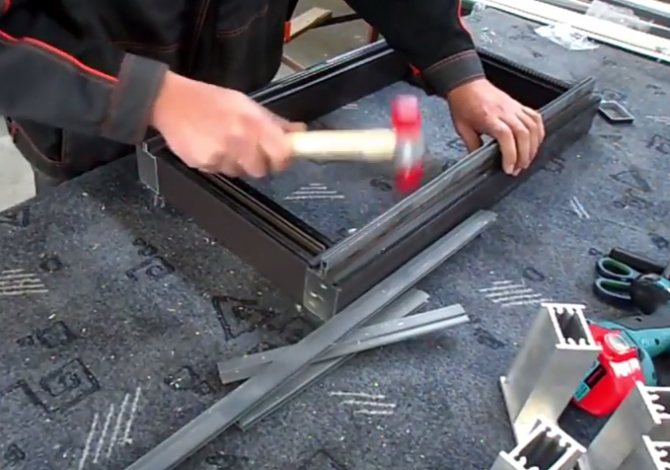

Install a thermal bridge
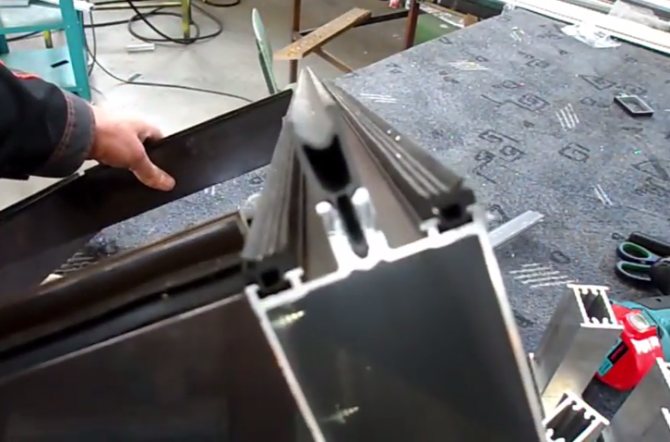

Installed item
Prices for popular models of screwdrivers
Screwdrivers
Video - How the facade system is assembled. Glazing
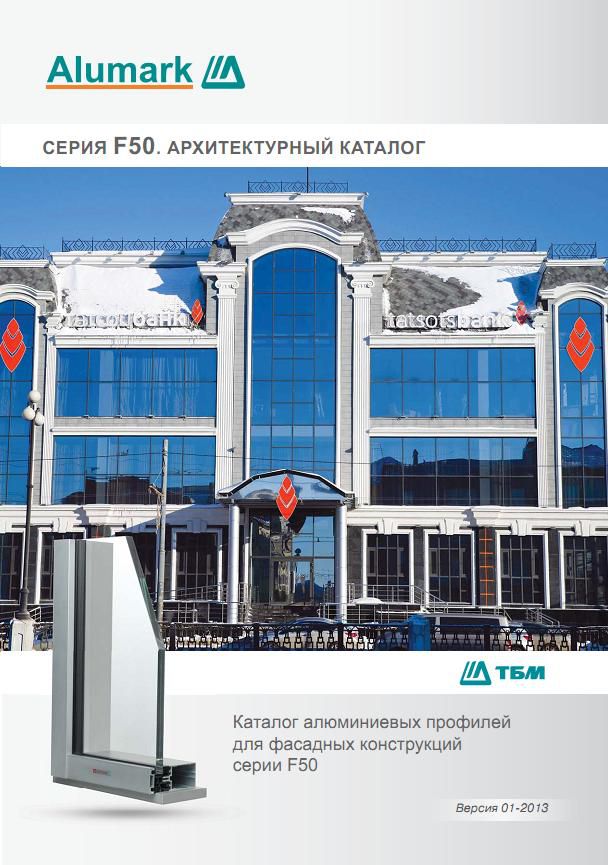

Catalog
Alumark. Manufacturing and installation of facade structures. Download instructions
Instructions
Scaffolding prices
Scaffolding
Video - Installation of aluminum stained glass
Video - Installation of aluminum stained glass (part 2)
Video - Stained glass installation, part 3
Preparing the installation site
The main work on the installation of products is preceded by the work of the preparatory period:
- preparation of installation sites for structures: floors, openings, walls and steel structures; in places where structures adjoin brickwork, concrete, steel half-timbered structures, structural elements must be protected from corrosion in accordance with SNiP 2.03.11-85.
- acceptance and preparation of openings before the installation of structures;
- verification of the dimensions of openings, floor marks, the presence of embedded parts to which aluminum structures must be attached, according to the normative and technical documentation; in case of any inconsistencies in the technical documentation, it is necessary to draw up an act with the participation of the customer and the general contractor;
- carrying out works related to wet processes (with wet finishing works).
Before starting the installation, you need to prepare a site for assembling the elements into assembly marks, have the tools and devices necessary for installation work.
Types of facade systems
Before starting work on the glazing of the facades, you need to choose the option that is optimal for each case. Today there are several types, each with its own characteristics.
Warm and cold. If the interior is heated, then in order to save costs for maintaining a favorable temperature, you need to choose a warm version of the facade glazing made of aluminum profiles. Warm glazing has at least two-chamber double-glazed windows; to create a structure, special profiles with several air chambers inside are used. The cost is quite expensive.
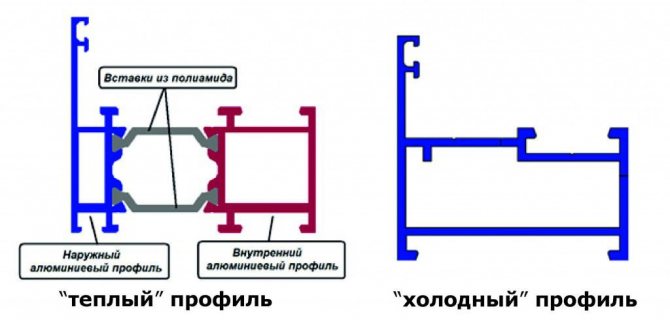

Profile types
The cold one will cost much less, the weight of the structure is insignificant; cheap single-chamber profiles can be used for installation. In addition to a small number of chambers, such profiles have thin walls - less expensive aluminum alloy is used for manufacturing. As a result, the selling price is much lower.
Frameless and framed structures. For frameless profiles are not needed, there is a different installation technology. And to create frame, aluminum profiles and additional elements are used. Frame can be of several types:
- post-transom;
- modular;
- structural or semi-structural.
Post-transom consist of vertical bearing racks and horizontal transoms.The parameters of the metal profiles are selected depending on the size of the structure and the characteristics of the glass units. How such structures are assembled, we described above.
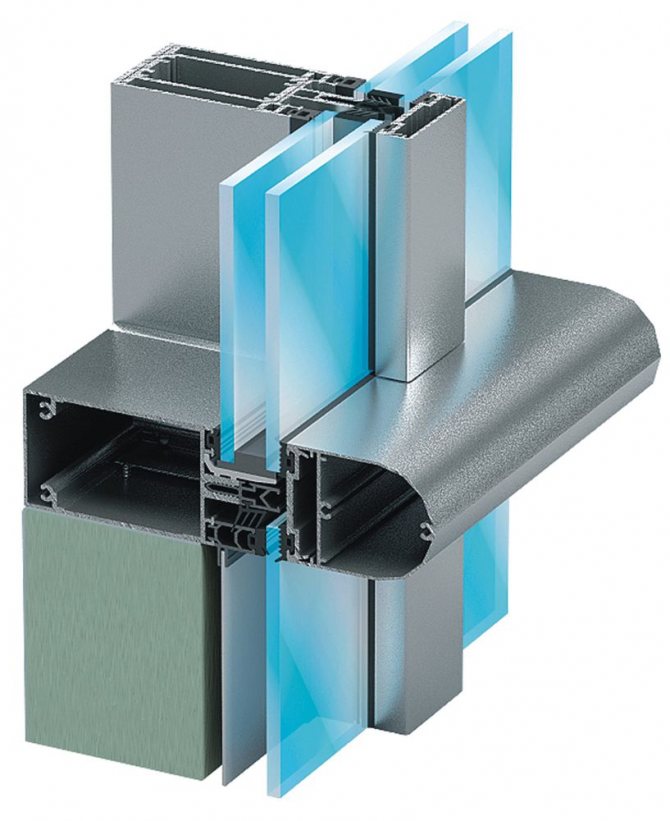

Post-transom systems
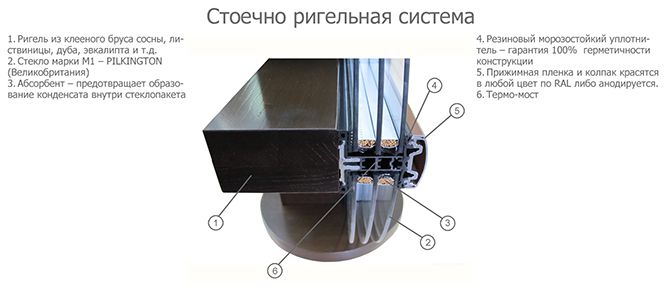

Scheme of glass fixing in the post-transom system of glazing of facades
File to download. Wiring diagrams
Wiring diagrams
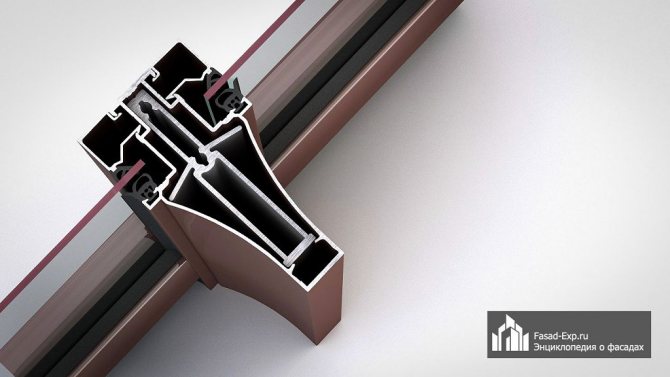

Straight post-transom facade
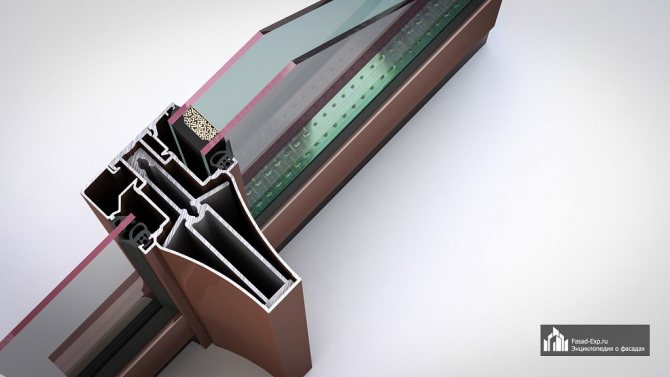

Straight post-transom facade, double-glazed window 24 mm
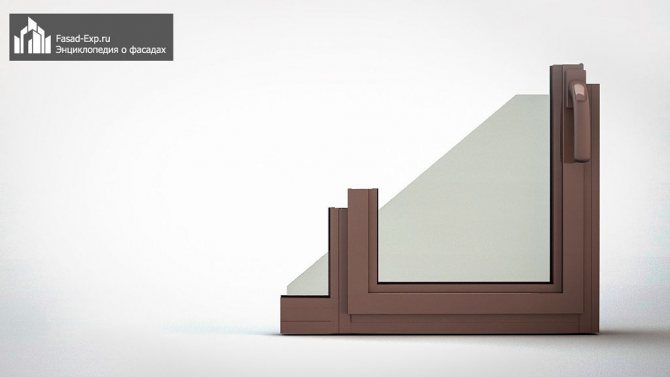

Straight post-transom facade, inward opening sash
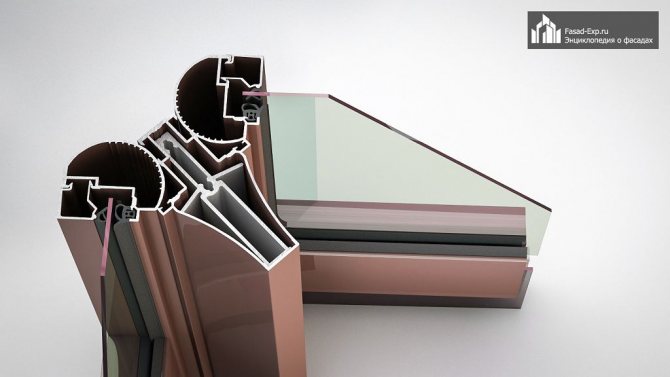

Bend of the plane inward up to 90 °
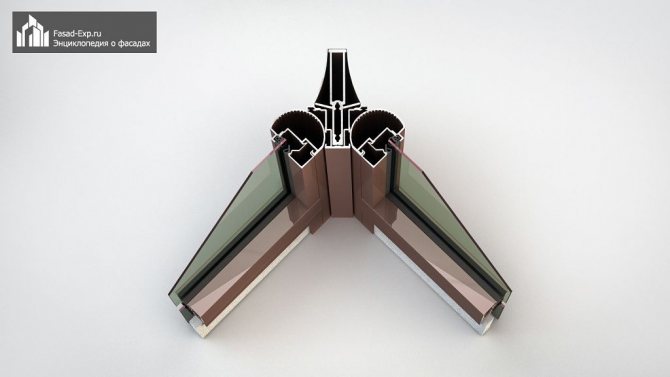

Bend of the plane outward up to 90 °
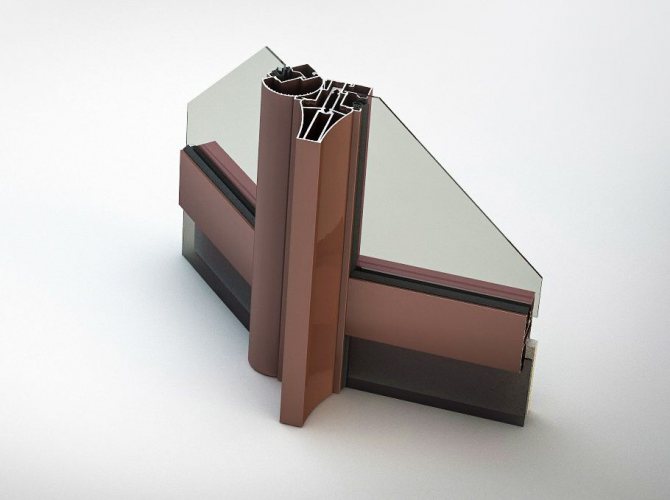

Bend of the plane outward 45 °
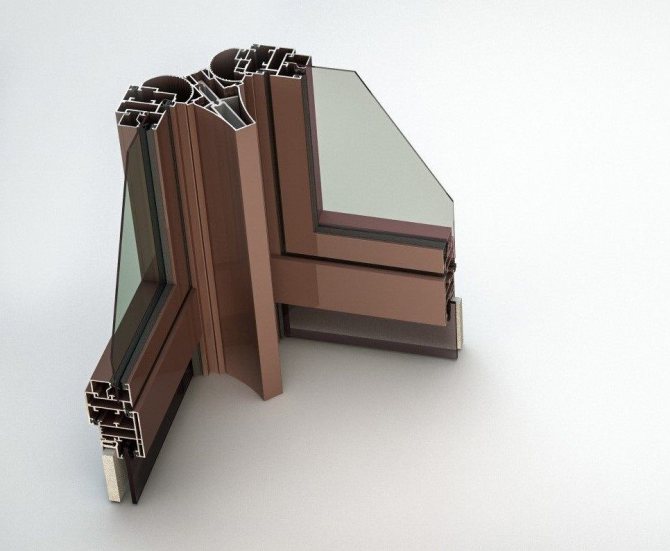

Bend in the plane inward up to 90 °, opening sashes
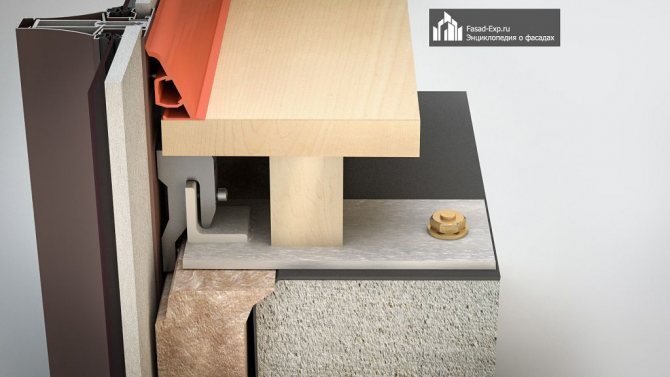

Attachment to the interfloor overlap
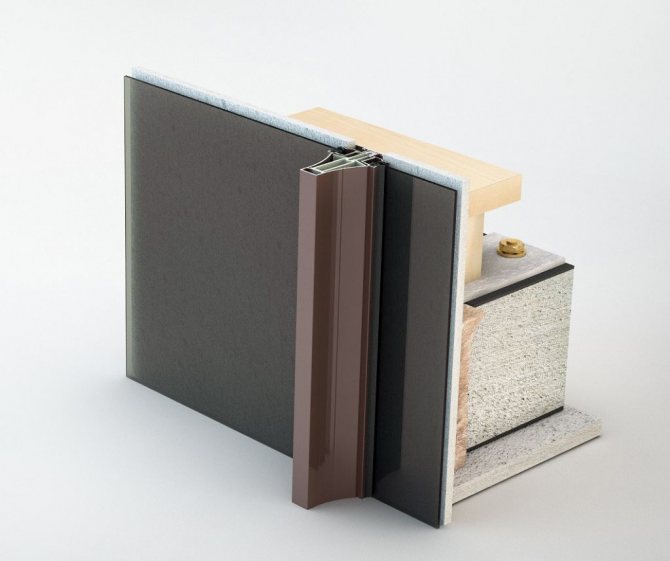

The applied solution of the bracket provides a wide 3D range of adjustments to the position of the fixed post, provides a minimum gap between the facade and the load-bearing ceiling
Modular. They are made according to the sketches of consumers at specialized enterprises and are delivered ready-made. The individual modules are assembled on site. Due to this technology, installation time is reduced and the risks of incorrect assembly are eliminated. Unfortunately, the cost of the construction increases significantly.
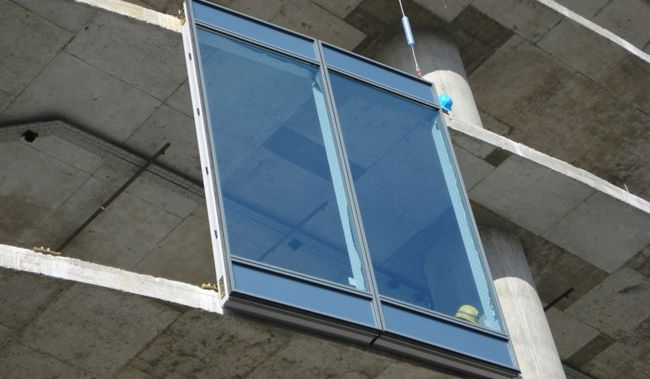

Modular glazing system
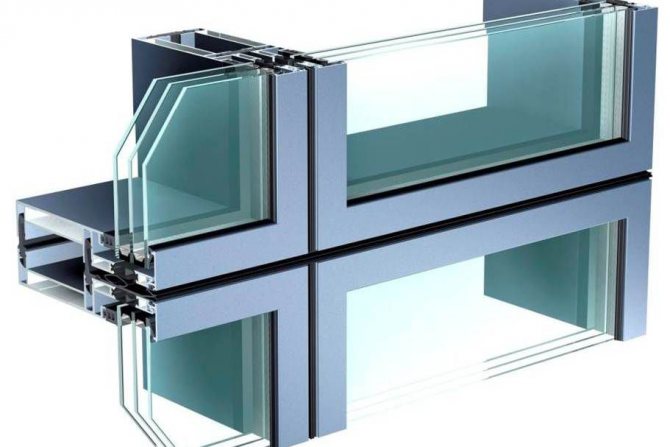

The design of the unit of modular elementary glazing
Structural. All fasteners are located inside the structure and are invisible from the outside. They have improved design characteristics, but there are restrictions on the height of buildings. The structures do not have a sufficient safety margin, the weight of the structure is limited.
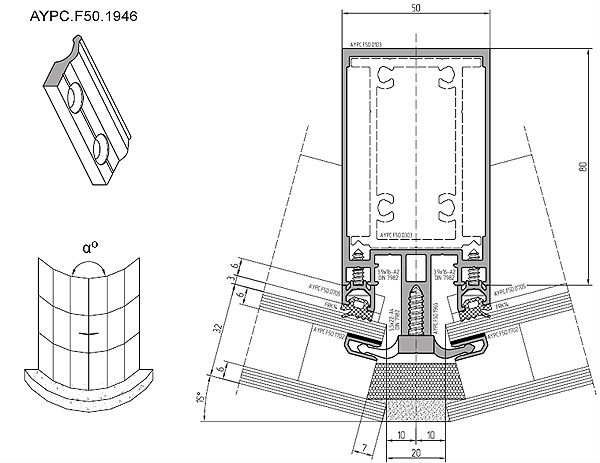

Structural glazing
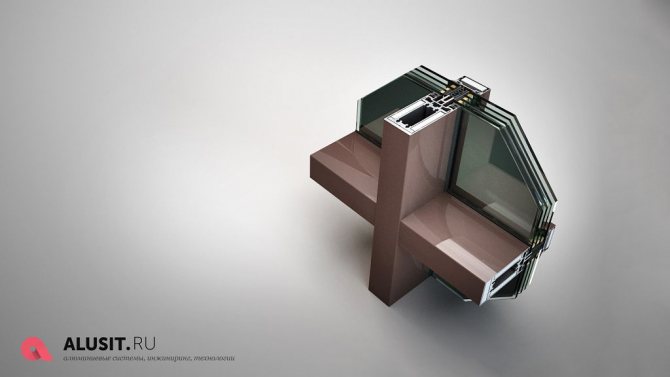

Alusit structural glazing system
Semi-structural. They are superior in strength to structural ones, and have additional reinforcing elements.
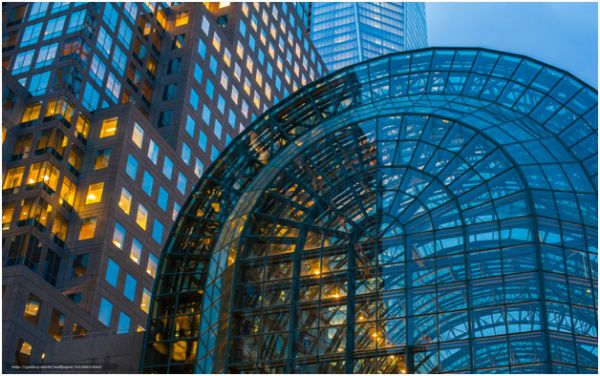

Semi-structural facades are also created using structural glazing, but there are a number of differences from fully structural facades.


Organization of the transition from an inclined part to a vertical one in a semi-structural type of glazing
V. Furniture facade
For furniture, facades with stained-glass windows are not only beautiful, but also practical, because When broken, the film stained-glass window does not shatter into pieces, but remains entirely on the film.
Stained glass furniture facades look especially beautiful when the cabinet is illuminated from the inside. If you do not do internal lighting, then it is better to use bright juicy colors.
Hinges
There is a fittings for installing glass doors in a wardrobe. These are hinges with plugs: They are attached to glass doors through holes in the glass. The diameter of the hinge hole is usually 26 mm.
Here, too, there are no problems with replacing glass doors with stained glass doors in the finished cabinet. Moreover, you can even replace the wooden cabinet doors by removing them along with the hinges and replacing them with the hinges mentioned above.
Installing the facade system in place
Important. Installation of a facade system made of aluminum profiles is carried out without double-glazed windows. If there are window sashes, they are dismantled.
Step 1. Measure the dimensions of the opening in the wall, check if they correspond to the parameters of the facade system. If necessary, increase or decrease the openings, the optimal distance between walls and structural elements is 1–2 cm.
Step 2. Lift the assembled structure carefully and place it in place. When lifting, apply force evenly, work should be carried out by at least two people. Align the structure strictly vertically in level, fix its position with wedges.
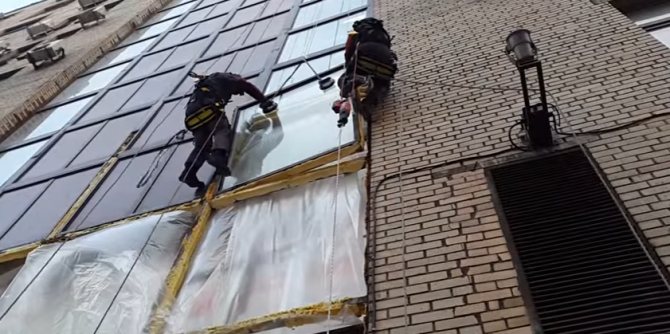

Lifting the structure
Step 3. Drill holes for anchors around the perimeter of the profiles, insert them into place and secure. Lock your heels at the top and bottom of the structure.
Step 4. Blow out the gaps between the aluminum structure and the wall opening with foam. Moisten surfaces thoroughly before foaming. Moisture not only significantly increases the adhesion of materials, but also accelerates the curing time of the foam.
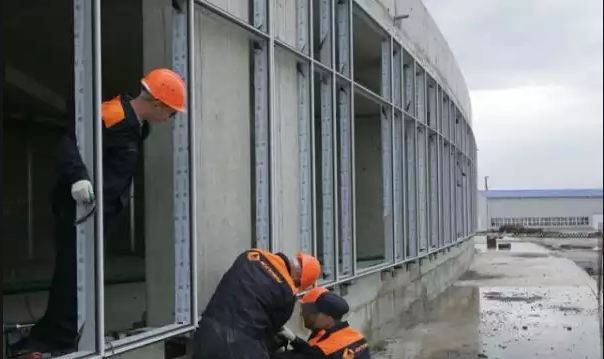

Facade glazing
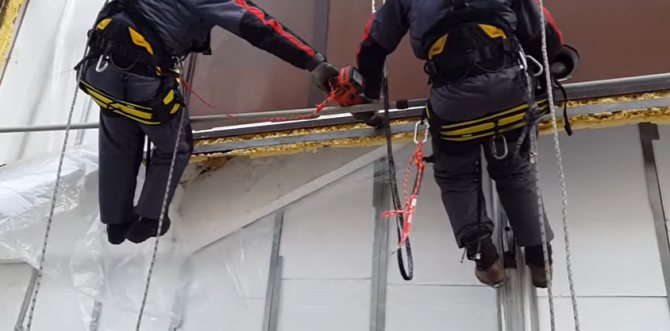

Foaming
Step 5. After hardening, cut off the protruding foam, smooth the surfaces with plaster.
Step 6. Carefully insert the double-glazed windows, put the glazing beads in place.
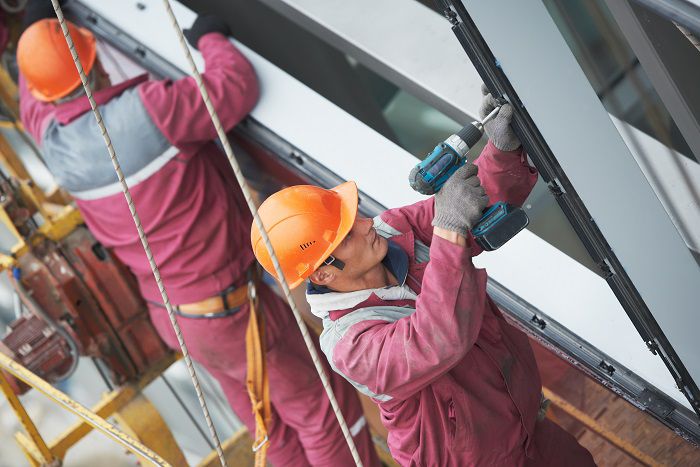

Installation of aluminum structures
This completes the installation of the structure, you can proceed to the finishing of the premises. If the floors are unfinished, do your best to ensure that the bottom ledger has a stop along its entire length. This greatly strengthens the structure and increases operational safety. If during the installation of double-glazed windows, swaying was found, be sure to find the cause and eliminate it. It is strictly forbidden to install double-glazed windows in fragile structures.
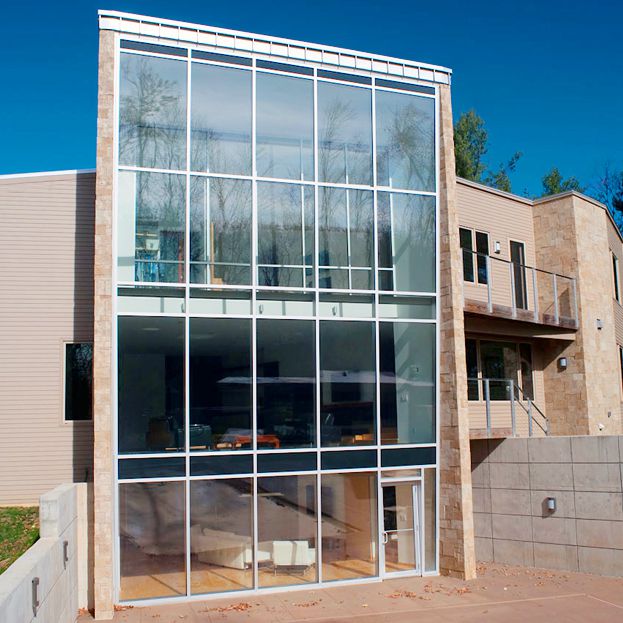

The facade of the building is made using translucent structures
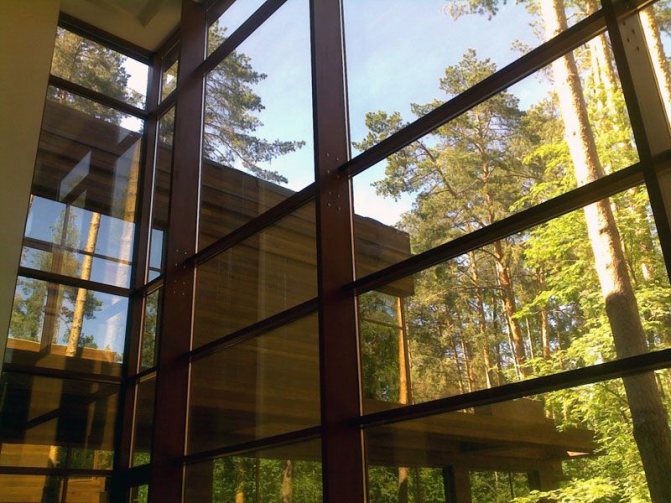

Aluminum structures
Preparatory work
Preparation begins by examining the place where the stained glass will be installed. First, measurements are taken. Then the type of fastening is determined and the fastening material is selected, a work plan is drawn up.
This is followed by a stage that can be called the preliminary stage. That is, at this stage, all repair or general construction work is completed. If, of course, the stained-glass window is supposed to be installed during the period of repair or construction of the object.
Then we prepare the basis for installation. For this, the place of work, that is, one or more openings are cleaned of debris, dust, dirt. It may be necessary to additionally process and dry them. We mark the places where the product will be attached. If necessary, we will also note the places where its individual elements will be located.
Fill types
"Cold" execution
In the so-called "cold" systems, single glass or one double-glazed unit is used. As for the materials for thermal insulation, they are either completely absent or very few. Typically, the profile for such systems has a simple rectangular design and is not equipped with a thermal break insert. Translucent stained-glass windows without thermal inserts are designed to decorate and protect the building from bad weather. In view of smaller requests, the cost of "cold" stained-glass windows is always lower.
"Warm" execution
The thermal insulating system of the facade glazing is realized by means of double-glazed windows built on an extended profile with a polyamide insert. The insert separates the outer and inner contour of the profile and blocks the flow of cold into the room. A warm stained-glass window is a characteristic element of residential premises and buildings with a large number of visitors all year round, for example, shopping facilities.
Advantages of stained glass structures
The profile structure does not differ in monumentality, but often this is not required from it, but as for the characteristics that affect presentability and functionality, here projects with capital walls are left far behind.
- Attractiveness. It is important that the beauty of new stained glass structures remains unchanged even after many years of installation. Unpainted aluminum not only serves for a long time, but due to the inclusion of other components in the alloy retains its metallic luster and is not covered with a layer of atmospheric scale. No less advantageous is the profile painted with polymer-powder compositions, since it is suitable for use with glasses of different colors and different degrees of tinting. Even before painting, the metal is additionally processed, so the paint does not peel off from it.
- Strength. Despite the lightness and seeming "weakness", the profile withstands the loads created by massive thick glasses, of which there can be several in one package. The internal structure of the profiles has additional stiffening ribs, so even a thin profile taken separately is not easy to bend manually, it is even more difficult to do it in the frame, where its rigidity increases and a uniform distribution of loads is achieved.In comparison with the frame elements of wooden and metal-plastic structures, the cross-sectional area of stained glass racks and crossbars made of aluminum is smaller, therefore it cannot be said that strength serves as a price for a "sophisticated" appearance.
- Durability. Aluminum and glass are insensitive to atmospheric factors such as wind, precipitation, UV radiation, so a reliably fixed stained glass window will last up to 50-70 years without discomfort at temperatures from -50 ℃ to + 70 ℃. These facts indicate that there is no need to spend money on restoration work. In addition to timely washing and checking the condition of the sealants, the aluminum system does not require anything else. If repairs are nevertheless required at some point, then the sectional structure of the stained-glass windows will allow local dismantling to be performed quickly and painlessly, without affecting the entire structure.
- Versatility. This property refers to the variety of conditions of use of aluminum stained-glass windows and to the scope of application. There are no restrictions on the use of stained-glass windows in climatic zones, you just need to select structures with the appropriate heat engineering characteristics. When choosing materials of one price segment, the final decision in favor of purchasing a stained-glass window is sometimes due to the convenience of installation work. It is possible to form the geometry of the wireframes and the size of the cells. Although stained-glass windows are more commonly seen on large buildings, as part of structural, enclosing and other facades, it is no less pleasant to observe them in a private house, cottage or villa.
- Environmental friendliness and safety. Aluminum does not emit any fumes or toxic substances, and even more so glass, therefore, all fears on this basis are unnecessary. Unlike ordinary cladding, which is simply ripped off by a strong wind and poses a threat to life, stained glass packages are completely safe and do not lose their integrity if installed correctly. Foreign and domestic experience shows that even multi-storey projects with stained-glass windows do not pose a threat, which means that they have a future.
